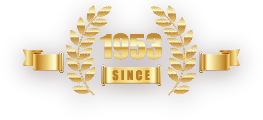Processes
ProtectoliteTM Inc: Four criteria for success when composite manufacturing:
• Based largely on type, amount and arrangement of the fiber reinforcement and of the different types of fibers, aramid,carbon, thermoplastic or fiberglass)
• Based on the type of resin used and how it is combined with other components, we determine and deliver the levels of performance required by your industry’s standards.
• Material selection alongside product and tool design determines the selection of the optimum process technology.
• The type of material used plays a crucial role in tool design and in determining which process to use.
• Cost and benefits are weighed, and the final decision is made based on your input, our feedback, and your careful consideration of the final options we present to you, our client.
Options for Molding Materials:
• Combines the ability to control resin input with medium length fibers
• Excellent for larger components that require highly refined surface finish, design complexity, and good mechanical properties.
• Clay-like substance that is a mixture of resins, additives & short fibers.
• End products such as smaller sized customized components where SMC fibers are too long or where elevated loadings of flame retardants are required for optimal electrical performance.
• Mat made of a combination of continuous glass fiber and/or random strands, with the option to add a binder for shaped rigidity
• Excellent for products requiring medium to large parts with a high concentration of fibers and consistent cross sections
Molding Processes:
• Suitable for low to medium volume production where assembly is not a key factor.
• Advantages: Simple, low cost tooling, virtually no limitations to part size, short lead times to production.
• Disadvantages: Lack of precise control on product dimensions, part to part variances in the manufacturing process. High part cost, low volume output, best for tens to hundreds of parts.
• Suitable for products requiring a medium to large surface, like truck & bus body side parts.
• Advantages: The length of the product is practically limitless. Higher degree of process control than found with Hand lay-up.
• Disadvantages: Low productivity due to the bag process. Part to part variances still exist, relatively short tool life if tooling is made in composite manufacturing.
• Suitable for small and medium volume production, Resin Transfer Moulding is best for hundreds to thousands of parts.
• Advantages: Molds are less expensive than for compression molding, and full heat is not required for Resin Transfer moulding. It can also provide good surface finish, and the parts are more accurate in production relative to hand lay-up & Vacuum Bagging.
• Disadvantages: Part costs are still relatively high, part to part variances still exist, relatively short tool life if tooling is made in composite manufacturing.
• Suitable for high strength, small, medium & large complex parts requiring good surface finish in larger quantity volumes. It is best for parts in the hundreds to thousands of parts.
• Advantages: Can create relatively large single-piece products at high daily production rates. Additionally, reproducible custom coloring can be incorporated into the finished product as well as ribs, metal inserts and other time/cost saving design features. Precise tolerances, repeatedly produced in single part. Low Part Cost.
• Disadvantages: Higher tooling costs at the start and longer lead time for tooling and the initial part/product production roll out.
• Suitable for products requiring a constant cross sections such as: rods, structural shapes, beams, channels, pipes, tubes. High strength is due to the high concentration and parallel orientation of the fibers to the product being drawn through the pultrusion process.
• Advantages: The length of the product is practically limitless. Precise tolerances, repeatedly produced from part to part. Low Part Cost.
• Disadvantages: Higher tooling costs and longer lead time for tooling and thus to production roll out. Cannot incorporate metal insert and certain design features, which are possible in compression molding, as they will create a die lock in pultrison molding.



